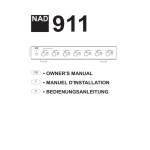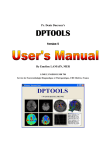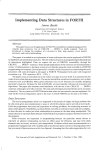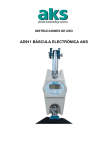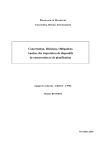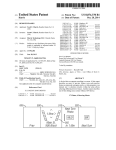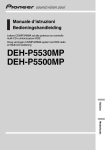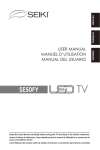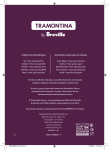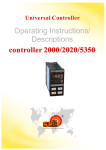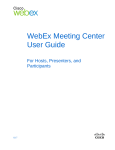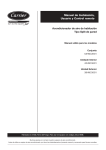Download Auto-detect system and method for data communication
Transcript
1111 1111 1 111 |||||I|J1S11111|5|1|311111|1111111111 111 11
United States Patent [19]
[11] Patent Number:
Hile et al.
[45]
[54]
Date of Patent:
AUTO-DETECT SYSTEM AND METHOD
5,097,528
FOR DATA COMMUNICATION
5,222,081
5,274,679
[75] Inventors: John K. Hile, Monroe; Michael R.
Ward, Ann Arbor, both of Mich.
Sep. 3, 1996
3/1992 Gursahaney et al. ................... .. 379/67
6/1993 Lewis et a1. .......... ..
375/117
12/1993 Abe et al. ............................. .. 375/117
OTHER PUBLICATIONS
HyperAccess, Communications Software For Windows,
User’s Manual Hilgraeve, Inc. 1993, written and produced
by Mahler Associates, Inc., Ann Arbor, Michigan.
[73] Assigneei Hilgl'aeve Incorporated, MOIIIOE,
MiCh.
Primary Examiner—Kevin J. Teska
[21] Appl' NO" 273’481
[22] Filed:
Jul. 11, 1994
[51]
5,553,271
Assistant Examiner~Russell W. Frejd
Attorney, Agent, or Firm—Hamess, Dickey & Pierce
Int. Cl.6 .................................................... .. G06F 9/455
[52] U_'S' Cl’
[57]
ABSTRACT
395,500
A method and system which is adapted to receive a data
[58]
Field of Search ............ ..: ........ .. 34'0/l72.5;'364/200;
stream, and test a Sen-es of multipleht Sequences from this
[56]
370/94’ 235/435’ 379/67’ 395/500
References Cited
data stream against a plurality of diiferent character forming
criteria until both of the following events have occurred.
Speci?cally, a predetermined number of the multiple-bit
U,S_ PATENT DOCUMENTS
sequences must be received and tested, and a predetermined
mix of multiple-bit sequences satisfying at least two of the
3,891,974
............................... ..
6/1975 Coulter et al.
340/1725
character forming Criteria must be received and tested. ()nce
4,077,058
2/1978 Appen at al_ ‘ _ _ .
. _ _ I _ " 364/200
both of these events have occurred, then‘a data word format
4,316,283
2/1982 Ulug .................... .. 370/94
15 detemfled fmm the 198111“ of thls mung’ and the
4,425,664
1/1984 Sherman et a1_ _
computer is con?gured to lnterpret and output characters
4,604,636
8/1936 Reiter' et a1_
4,635,275
1/1987
4,680,781
Borg et a1. . . . . . . .
____ __ 375/8
354/200
from the data stream in accordance with this data word
. . . . . .. 375/8
format setting. The characters interpreted from the data
7/1987 Amundsen et a1
4,715,044
12/1987
Gamer
5,012,489
4/1991
5,021,949
6/1991 Morten et a1.
375/8
stream are also tested against a plurality of terminal emu
--- - -'- --' -'
- - - - - -~ 375/3
lation criteria until a character sequence has been detected
Burton et a1. . . . .
. . . . . .. 375/8
which is indicative of only one emulation Standard
Hesdahl et a1. . . . . . .
364/200
5,031,207
7/1991
5,034,598
7/1991 Poland .................................. .. 235/435
F
38
. . . ..
379/93
11 Claims, 7 Drawing Sheets
U.S. Patent
Sep. 3, 1996
Sheet 1 of 7
f2‘:
20
5,553,271
2s
16
[1
‘A
18
J
O2
204
RECEIVE AS _J
8-N-1
205
f
210
RECORD ERROR CAN
REMOVE CHAR
READ COMM PoRTJ
2O 8
COMM ERRORS
?
NO
2 12
TERMINAL EMULATION
ANALYZE
218
l
PASS DATA
TO EMULATOR
IS
AUTO-DETECT ON AND
CARRIER RCVD.
7
YES
AUTO-DETECT
ANALYZED
214
US. Patent
Sep. 3, 1996
Sheet 2 of 7
5,553,271
BEGIN
AUTO-DETECT
ANALYZE
214
'300
IS
AUTO-DETECT ALREADY
RUNNING
?
START AUTO-DETECT
AND INITIALIZE ALL '
COUNTERS TO ZERO
302
(
ANY
FRAMING ERRORS
NO
f
306
STOP
AUTO-DETECT
308
ADD SAMPLE SIZE
TO ADTOTAL
GET NEXT J10
CHARACTER
FROM SAMPLE
312
IS
THERE AN ODD
# OF BITS IN LEAST SIGN.
YES
7 BITS OF CHAR
?
INCREMENT
NO
Fig-3A
ADMIX
MEMBER
318
US. Patent
Sep. 3, 1996
Sheet 3 0f 7
5,553,271
314
IS
THERE AN ODD
# OF BITS USING 8
YES
BITS
?
(
320
INCREMENT
nAD7o1
MEMBER
316
IS
MOST SIGN BIT.
YES
OF THE CHARACTER
A I
?
{322
INCREMENT
ADHIGHBITS
MEMBER
CHECKED
ALL CHARS
?
326
HAVE
ENOUGH CHARS
BEEN RECEIVED AND ODD/EVEN
MIX SUFFICIENT
'2
YES
Fig-3B
NO
328
/
SET MOST SIGN.
BIT OF ALL
CHARACTERS TO 0
US. Patent
Sep. 3, 1996
Sheet 4 of 7
5,553,271
330
IS
nAD70I=O
?
YES
[332
SET COMMUNICATION
PARAMETERS TO 7eI
nAD7o1=nADTOTAL
?
(
336
SET COMMUNICATION
PARAMETERS TO 70I
338
W
SET COMMUNICATION
PARAMETERS TO 8nI
340
W
STOP AUTO-DETECT AND CONFIGURE PROGRAM
FOR DETECTED PROTOCAL
Fig-3C
US. Patent
Sep. 3, 1996
5,553,271
Sheet 5 of 7
ADMIX > 0 AND
ADMIX < ADTOTAL
'?
AD701=
ADTOTAL
348
?
SET
ADBESTGUESS=
"'0
AD_701
345
rs
nAD7o1=O
YES
350
SET
ADBESTGUESS:
NO
AD_7E1
354
'
_
"ige?i?iuis?gw
'
“
l
K
352
SET
nADBESTGUESS=
AD_8N1
Fig-3D
U.S.- Patent
Sep. 3, 1996
Sheet 6 of 7
5,553,271
BEGIN
AUTO-DETECT
OUTPUT
356
358
IS
AUTO-DETECT ALREADY
RUNNING
?
START AUTO-DETECT
AND INITIALIZE ALL
COUNTERS TO ZERO
36D
YES
GWITCH DECISION BASED UPON VALUE OF nADBESTGUES§
I
362
CASE J
AD__8NT
I
366
CASE
I
370
I
CASE J
AD__7E1
AD__7OI
K368
CONVERT
CHARACTERS
TO 761
Y
CASE
AD_DONT_KNOW
f372
CONVERT
CHARACTERS
TO 781
Y (
376
ALTERNATELY
TOGGLE
PARITY BIT
PASS DATA TO COMM PORT SELECTED
364)
Fig-3E
374
U.S. Patent
Sep. 3, 1996
Sheet 7 of 7
5,553,271
216
\
BEGIN
TERMINAL ANALYZE
400
YES
'5
THE EMULATOR LOCKED
IN?
404
YES
THIS AN ANSI ONLY
SEQUENCE?
NO
410
ANOTHER
UNIQUE EMULATOR
YES
SEQUENCE?
NO
412
THRESHOLD
LOCK INTO ANSI
?
I
YES
EMULATOR TYPE
DETECTED
NO
2
PROCESS COMMAND/CONTROL CODE
408
Fig-4
LOCK IN
406
5,553,271
1
2
AUTO-DETECT SYSTEM AND METHOD
FOR DATA COMMUNICATION
operation of a computer terminal is called terminal emula
tion, and it is needed in order to convey non~text character
codes between computers. For example, screen codes are
needed in order to properly display text and graphics, such
BACKGROUND OF THE INVENTION
as wrapping text onto the next line of the monitor or screen
when the line of text would otherwise extend beyond the
?ght edge of the screen. Control codes are also used to
The present invention generally relates to data commu
nication, and particularly to a system and method for auto
matically detecting and responding to the transmission set
tings used by a data communication transmitter. More 1
speci?cally, the present invention is designed to automati
cally con?gure both the word format interpreter, as well as
automatically select the type of terminal needed to be
emulated at the data communication receiver.
Anyone who has ever spent much time with a computer
knows that installing just about anything new can be both a
sequences.
Unless all of this information has already been pro
grammed into a computer, it will be up to the computer user
to intelligently enter this information into his/her computer
for each telephone number or computer system that the user
needs or desires to conduct a communication session. In
addition of a new capability can present yet another chal
calling a new telephone number with a computer is not as
terminal standards currently in use, such as ANSI, VTlOO,
'I'I'Y and IBM3278, and each of these terminals have their
own complete set of key code meanings and display
frustrating and time consuming experience. Even when all
of the hardware and software is properly installed, the
lenge to the user. For example, something as simple as
execute a command, such as “break” to interrupt commu
nication between the computers. There are various types of
20
light of the fact that there is a multitude of commercial,
vendor support and private bulletin board services available
to a computer user today, the user may have to repeat the
easy as it sounds. With normal voice telephone communi
process of con?guring the communication settings quite a
cation, only a telephone number is needed to initiate a
number of times without really having a reasonable under~
telephone call, and absolutely nothing is needed to answer
standing of the underlying process. In other words, one of
an incoming call. However, this is not the case with com 25 the more important aspects of computer operation today, that
puter-to-computer telecommunication or other forms of
is the ability to communicate with other computers, still
serial communication between computers. In order for two
remains a repetitive and relatively obscure procedure.
computers to communicate effectively, each of them must be
Accordingly, it is a principal objective of the present
able to understand the codes that the other is transmitting,
invention
to provide a method and system for automatically
whether these codes represent text, control or screen char 30
detecting the data communication settings being used by
acters. Even a person’s ability to understand a spoken word,
another computer, and automatically con?guring the data
such as “Hello”, depends upon a knowledge of the English
communication settings to this computer, without necessar
language. In other words, the mere act of providing a
ily having any advance knowledge of the computer other
computer with the telephone number of another computer
than a telephone number or interface address.
will not guarantee that either computer will be able to
understand even a single character of text from the other.
It is another objective of the present invention to provide
an auto-detect method and system which is capable of
detecting both the transmission word format and the termi
nal standard being employed without requiring any user
intervention or pre-arranged communication protocol or
Rather, various disparate communication settings must be
properly con?gured in order for two computers to commu
nicate through a modem or other data stream interface.
Unfortunately, the con?guration of a computer’s commu
nication settings is possibly one of the least understood
aspects of using a computer. For example, while most people
have a general understanding that “baud rate” is somehow a
measure of communication speed, relatively few people
40
handshaking procedure.
It is a further objective of the present invention to provide
an auto-detect method and system which is independent of
the data being transmitted or the speci?c modem sets or
fully appreciate what this measurement means or realize that 45
the effective baud rate can be considerably different than the
interfaces being employed.
rating of the modem itself. Additionally, the user is usually
confronted with determining several interrelated settings for
interpreting a computer “word” which are less than intuitive,
provide an auto-detect method and system which is capable
of turning itself off, as well as checking for line noise and
reinitialization requests.
such as parity, the number of data bits and the number of
SUMMARY OF THE INVENTION
stop bits. For example, the parity setting could be con?gured
To achieve the foregoing objectives, the present invention
with one of the following choices: none, even, odd, mark or
space. In contrast, the number of data bits could alternatively
be con?gured with numbers such as 8, 7, 6, or 5, depending
upon the choice made for the parity setting. Likewise, the
number of stop bits could alteratively be con?gured with
55
provides a method and system which is adapted to receive a
data stream, and test a series of multiple'bit sequences from
this data stream against a plurality of different character
60
forming criteria until both of the following events have
occurred. Speci?cally, a predetermined number of the mul
tiple-bit sequences must be received and tested, and a
predetermined mix of multiple-bit sequences satisfying at
least two of the character forming criteria must be received
numbers such as l, 1.5 or 2, depending upon the choices
already made for the other two settings.
Furthermore, computers generally communicate with
each other as though they were a speci?c type of standard
“terminal” that would be connected to a particular host
It is an additional objective of the present invention to
and tested. Once both of these events have occurred, then a
computer, even though only the smallest of micro-computers
data word format is determined from the results of this
are involved in the communication. Generally speaking, a
computer terminal includes at a minimum a keyboard for
entering information from the host computer, and a display,
such as a CRT (cathode ray tube), for viewing information
testing, and the computer is con?gured to interpret charac—
from the host computer. The technique of simulating the
ters from the data stream in accordance with this data word
65
format setting.
The present invention is also adapted to test the characters
interpreted from the data stream against a plurality of
5,553,271
3
4
terminal emulation criteria until a character sequence has
been detected which is indicative of only one terminal
emulation standard. In this regard, a multiple-level state
such as an Integrated Services Digital Network (ISDN)
terminal adapter. Similarly, it should be appreciated that the
present invention is not dependent upon the particular trans
mission medium being employed for the communication
session. Accordingly, the medium of communication is
generically illustrated in FIG. 1, between the various
machine is advantageously employed to facilitate a rapid
and reliable determination of the emulation mode that
should be employed for the current communication session.
Additional features and advantages of the present inven
tion will become more fully apparent from a reading of the
detailed description of the preferred embodiment and the
devices, such as the communication line 26 between the
modem 20 and the switching station 16. These communi
cation lines 24-32 may be used to represent any suitable
communication medium, such as copper wire, ?ber~optic
accompanying drawings in which:
cable, radio waves and so forth.
FIG. 1 also shows a second form of data communication,
BRIEF DESCRIPTION OF THE DRAWINGS
namely data communication which is more directly between
the transmitting computer 12 and the receiving computer 14.
FIG. 1 is a diagrammatic representation of the auto-detect
data communication system according to the present inven
In this case, the computers 12-14 could be connected
together over a local area network or to each other’s serial
tion.
FIG. 2 is an overall ?ow chart of the auto-detect com
communication ports. To illustrate these types of connec
tions, FIG. 1 includes a communication line 34 between the
munication method according to the present invention.
FIGS. 3A-3E represent a set of ?ow chart diagrams which
illustrate the Auto-Detect Analyze method depicted in FIG.
transmitting computer 12 and the receiving computer 14.
2 and an Auto-Detect Output method in connection there
with.
FIG. 4 is a block diagram which illustrates the Terminal
Analyze method depicted in FIG. 2.
25
DETAILED DESCRIPTION OF THE
PREFERRED EMBODIMENTS
However, in a multiple-CPU or multiple-threaded process
ing environment, it should be understood that the transmit
ting computer 12 and the receiving computer 14 could also
be part of the same physical computer entity.
In any event, the transmitting computer 12 and the receiv
ing computer 14 should include the hardware components
which are typically included in commercially available
computer systems or work stations. For example, the com
puters 12-14 should both be equipped with a mother board
Referring to FIG. 1, a diagrammatic representation of the
auto-detect data communication system 10 according to the
having a CPU (Central Processing Unit) and su?icient
randomly accessible memory (e.g., RAM or Flash memory)
present invention is shown. In this regard, FIG. 1 illustrates
two types of data communication between a transmitting
computer 12 and a receiving computer 14. While computer
12 is labeled as the transmitting computer and computer 14
is labeled as the receiving computer, it should be understood
that both of these computers will be transmitting and receiv
ing data during a communication session. Thus, the trans
mitting label attached to computer 12 is used to signify the
computer which is sending a data stream which the receiving
computer 14 needs to be able to interpret in real time. While
the present invention is described in connection with the use
of a serial data stream, it should be appreciated that the
present invention may .be used with other forms of data
streams, such as parallel data streams. The present invention
is further described in connection with an asynchronous
form of data transmission, it should also be understood that
the present invention may be adapted for use with synchro
to run the computer programs needed by the computer, a
storage device (e.g., hard disk drive 36), a monitor or ?at
panel display (e.g., monitor 38 and display panel 40), and a
keyboard or other input device (e.g., keyboard 42). Again,
35
however, it should be understood that the present invention
is not limited to any speci?c set of computer hardware
components, and that the present invention may be used with
a variety of computer entities which are otherwise capable of
transmitting and receiving data signals between other com
puter entities. For example, the present invention could be
integrated into the operation of a modem, as opposed to
employing the processing capability of the computers
45
12-14. In other words, the modems 20-22 could be con
structed to perform the auto-detect methods according to the
present invention. The modems could then either identify the
proper communication settings for their respective comput
ers or perform the necessary signal conversions so that the
modems always use a predetermined pattern of communi
cation settings with their respective computers. On the other
The ?rst type of data communication illustrated in FIG. 1
is one in which a conventional telephone system is used as 50 hand, the functionality provided by the modems 20-22
could also be integrated into their respective computers as
the data transmission carrier or facility. In‘ this case, the
well.
telephone system is represented by one or more public
Referring to FIG. 2, an overall ?ow chart of the auto
switching stations, such as switching stations 16 and 18.
Additionally, each of the computers 12-14 will generally
detect communication method according to the present
require its own communication interface device for convert 55 invention is shown. In this regard, it should be pointed out
ing the binary-based signals used by a computer to the type
that this method may form part of a comprehensive high
perforrnance communication program, such as HyperAC
of signal needed for transmission on a telephone network,
such as an analog-based signal. Accordingly, FIG. 1 shows
CESS® for Windows or HyperACCESS®l5 (for DOS or
IBM OS/2®). Each of these exemplary communication
the use of a modem (modulator/demodulator) by each of the
computers 12-14 as the communication interface device. In 60 software products are commercially available from the
nous forms of data transmission.
this regard, the modem 20 provides the interface between the
transmitting computer 12 and the switching station 16, while
the modem 22 provides the interface between the receiving
computer 14 and the switching station 18, However, it
should be appreciated that the present invention is not
dependent upon the type or model of interface, and that other
suitable communication interface devices may be employed,
65
Hilgraeve, Inc., Monroe Mich. While the present invention
may be implemented in part through software, it should be
understood that a hardware only implementation may also
be provided in the appropriate application. For example, a
set of interconnected logic gates could be provided to ?lter
desired information from the data stream being received, and
counters provided to increment or otherwise record the
5,553,271
6
5
results of the ?ltering action. An additional set of logic gates
Assuming that no communication errors were encoun
tered, then the Receive Re?ll routine will check to see if the
Auto-Detect feature is still turned on and the carrier is
or a set of comparators could then be employed to make the
communication setting determinations after a suf?cient
number of signals from the data stream have been tested to
produce a reliable determination, as will be more fully
connected (diamond 212). If the answer is Yes, then the
Receive Re?ll routine will call the Auto-Detect Analyze
routine 214 in accordance with the present invention. If the
answer is No, then the Receive Re?ll routine will proceed to
the Terminal Emulation Analyze routine 216. The Auto~
Detect Analyze routine 214 is designed to detect the type of
described below.
FIG. 2 shows that the auto-detect communication method
may advantageously form part of a Receive Re?ll routine
200, which is in turn part of a larger communication
program. The Receive Re?ll routine is called when the
buffer used to receive data is empty in order to re?ll it. This
routine assumes that data is being received and it needs to be
10
processed. In other words, for example, a communication
session has been initiated between computers 12—14, and the
receiving computer 14 must now interpret the information
being conveyed in the data stream sent by the transmitting
data word format being used by the transmitting computer
12 for character coding, and con?gure the communication
port to this format. Similarly, the Terminal Emulation Ana’
lyze routine 216 is designed to detect the type of terminal
that the transmitting computer 12 is emulating, and to lock
in the receiving computer 14 to this type of terminal emu
lation. Once both the data word format and terminal emu
computer 12. This communication session could be initiated
by the receiving computer 14, once the user has entered the
lation settings have been con?gured, then the data read from
the communication port is passed on to the emulator portion
telephone number (or interface address) into the communi
cation program responsible for handling this communication
of the communication program for further processing (block
218). For example, the emulator software will be responsible
session. In order to minimize the interaction of the user with
20
the initial setup procedure for the communication session,
the communication program could be programmed to use
the baud rate negotiated by the modem 22 and always turn
on the Auto-Detect feature as hereinafter described in detail. 25
The ?rst step in the Receive Re?ll routine 200 is to check
if the Auto-Detect feature is currently turned on or otherwise
enabled (diamond 202). If the answer is Yes, then the
communication port of the receiving computer 14 will
employ a predetermined word format, which preferably is a
word format which does not lose any data if it is incorrect
word formats used for asynchronous serial data communi
cation will be discussed ?rst. These word formats are
referred to herein as “8n1”, “701” and “7e1”. As discussed
(block 204). In this regard, the currently preferred word
format is “8n1”, which stands for eight bits per character, no
above, “8n1” stands for eight bits per character, no parity
parity, and one stop bit. In other words, the communication
port will be con?gured to interpret the initial data received
in a way which provides the highest probability of being
correct. In this regard, it should be understood that there is
no parity bit in this word format which could be stripped off
as not being part of the data sequence. In the event that the
answer to diamond 202 is No, then the Receive Re?ll routine
and one stop bit. Similarly, “701” stands for seven bits per
character, odd parity and one stop bit. Finally, “7e1” stands
for seven bits per character, even parity and one stop bit.
From this brief description, it should be apparent that all
three of these word formats have one stop bit as a common
setting. However, it should also be noted that all three of
these formats also employ a total of ten bits per data word.
These three formats are illustrated in Table 1 below using the
202 will proceed directly to reading the communication port
(block 206). In this case, the computer 14 will employ the
example of a simple transmission of the English word
“Hello” to the receiving computer. Accordingly, Table 1
shows the coding used for each of the letters in the word
communication settings which have either been set manually
by the user or set automatically as a result of the present
invention.
Next, the Receive Re?ll routine will check for the pres~
ence of communication errors (diamond 208). In one form
for responding to the terminal control codes received from
the transmitting computer 12. While this terminal emulation
responsibility may be as simple as sending properly inter
preted characters to the display panel 40, there are a variety
of control codes which do not necessarily effect or change
what the user sees on the display panel 40.
In order to have a better appreciation for how the present
invention detects the type of word format being used by the
transmitting computer 12, the three most commonly used
45
“Hello”, as well as the coding for the “Enter” key on the
keyboard of the transmitting computer 12. Each of these
codes are based upon the American Standard Code for
of the present invention, the Read Comm block 206 is a
Information Interchange (“ASCII”), which is commonly
function which will return a value based upon whether or not
used to store text. Letters, numbers, and special characters
the reading procedure was successful. If hardware or soft 50 ($, #, % and so forth) are represented by different sequences
of binary l’s and O’s which consist of seven data bits per
ware problems outside of the scope of this invention prevent
character. While the use of seven bits per character permits
one or more characters from being read accurately from the
a total of 128 different characters, there is an extended ASCII
data stream, then the Receive Re?ll routine will respond by
character set which is used for graphics and other special
recording the error and removing the data word character
from further processing (block 210). In one form of the 55 characters. The extended ASCII character set is based upon
eight bits per character, and it enables another 128 different
present invention, the various routines of the auto—detect
characters to be represented in code for a total of 256
communication method could be constructed in the “C”
possible characters. The 8n1 word fonnat is based upon the
programming language and compiled for the Microsoft
extended ASCII character set, while the other two word
Windows environment. In such a case, certain functions
formats are based upon the seven bits per character ASCII
available in the Microsoft Windows API may be employed,
character set.
such as “ReadComm” for reading a pre-speci?ed number of
In light of the fact that an asynchronous transmission
characters from a prespeci?cd communication port and
copying these characters into a pre-speci?ed buffer, and
protocol is used with the 8n1, 701 and 7e1 word formats, the
“GetCommError” for specifying the error code returned
word format itself must contain the information necessary to
from the ReadCorem function. However, it should be appre 65 apprise another computer entity as to where the code begins
ciated that other suitable functions and operating environ
and ends. Accordingly, each of these three word formats
ments could be utilized in the appropriate application.
include a start bit and a stop bit. By convention, the start bit
5,553,271
7
8
is always a binary 0 and the stop bit is always a binary 1. In
the 8n1 example, the word format consists of the start bit, the
In a serial transmission scheme, the data words are
transmitted sequentially, as illustrated in Table 2. Table 2
illustrates how each of the data words would be transmitted
under each of the word formats described above. In this
extended ASCII code and the stop bit, as shown in Table 1.
In contrast, the other two word formats include the provision
of a “parity” bit which is interposed between the stop bit and
the most signi?cant bit of the seven bit per character ASCII
5
as a standard technique enabling transmission errors to be
regard, it should be pointed out that there are not necessarily
spaces or pauses between data words when they are being
detected at the receiving computer 14. The added parity bit
transmitted.
code. The parity bit is added by the transmitting computer 12
TABLE 2
Example of Alternate Serial Transmission Parameters
Enter
o
1
1
e
11
1000011010
1100011010
1000011010
1111011110
1011011110
1011011110
1111011000
1011011000
1011011000
1111011000
1011011000
1011011000
1111001010
1011001010
1011001010
1110010000
1010010000
1010010000
701
7e1
8n1
20
From an examination of Table 2, it should be appreciated
makes the sum of binary one bits in the data word either an
odd number (for odd parity) or an even number (for even
parity), without including the start or stop bits.
While the present invention is described in connection
with examples of using word formats having ten bits per data
word, 1t should be appreciated that the present 1nvent1on
could be sultably modl?ed to detect communlcatwn settmgs
.
.
.
.
that there can be many instances when the data words are
identical even though two different word formats are being
employed. For example, the data words for the English word
“Hello” are the same for both the 7e1 and 8n1 word formats.
25
.
.
.
Accordmgly, 1f the data words for “Hello” were transmltted,
the receiving computer 14 would have a rather di?icult time
discerning which data word format was being used. Simi
whlch e_mP1°y a greater or lf’esser {lumber of 011$ I)er char-
acter- fslglélérlllyi 1h; preéfem lgvemlon ljfnot llmltgd to Phe
larly, the data word for the “Enter” key is the same for both
115‘: 9
the 701 and 8n1 word formats. In light of the fact that the
60 mg {n or er t? P6 0m} “5
etecuon
funct1ons, and other suitable coding techmques could be
used in the appropriate application.
TABLE
701 Setting Example
Odd
Character
Stop
Parity
Bit
Bit
Most
Least
Sign 6th 5th 4th
3rd
2nd
Sign.
Start
Bit
Bit
Bit
Bit
Bit
Bit Bit Bit
H
1
1
l
O
0
1
0
0
0
0
e
1
1
o
Enter
1
1
1
1
1
l
l
1
1
0
l
l
l
l
O
1
1
1
l
0
0
0
0
0
0
0
l
1
l
l
1
1
1
1
1
0
0
0
1
0
1
0
0
1
1
0
0
O
0
0
7e1 Setting Example
Even
Most
Stop
Parity
Sign 6th 5th 4th
3rd
2nd
Least
Sign.
Start
Character
Bit
Bit
Bit
Bit
Bit
Bit
Bit
H
e
1
l
o
Enter
1
1
1
1
1
1
0
0
0
0
0
l
l
1
l
l
1
0
0
l
1
1
1
l
0
0
0
0
1
0
0
1
0
0
1
1
0
0
0
0
0
O
Bit Bit Bit
0
1
1
1
1
0
0
0
0
0
0
0
1
0
1
1
1
1
8n1 Setting Example
Most
Least
Stop
Sign
7th
6th 5th 4th
3rd
2nd
Sign.
Start
Character
Bit
Bit
Bit
Bit Bit Bit
Bit
Bit
Bit
Bit
1-1
e
l
l
o
Enter
1
1
1
l
1
1
0
0
0
0
0
0
1
l
l
l
l
0
0
1
1
l
l
1
0
0
0
0
1
0
0
1
0
0
1
1
0
0
0
0
0
0
0
1
l
1
1
0
0
0
0
0
0
0
1
0
l
1
1
1
65
communication program in the receiving computer 14 may
5,553,271
10
not have any advance information as to which characters
data word (or character) being processed, as represented by
will be transmitted ?rst from the transmitting computer 12,
diamonds 312-316. The ?rst test is to see if there is an odd
the need exists for the auto-detect communication method
according to the present invention in order to reliably detect
the data word format being used as quickly as possible, so 5
that the information being transmitted is properly interpreted
number of bits in the least signi?cant seven hits of the
character (diamond 312). If the answer is Yes, then the
ADMix member of the data structure will be incremented by
0116 (block 318)- The Second test is to See if there is an Odd
number of bits using all eight bits of the character (diamond
314). If the answer is Yes, then the AD701 member of the
data St?lctufe will be incremented by one (block 320) The
at the receiving computer 14.
Referring to FIGS 3A_3D, a set of ?ow chart diagrams
which illustrate the AutoDetect Analyze method according
to the present invention is shown. The initial step in this 10 third test is to see if the most signi?cant bit of the character
method is a check to see if the Auto-Detect feature is already
is a binary 1 (diamond 316)- If i116 answer is YES, [hen lhe
running (diamond 3()())_ If this is the ?rst time that the
Auto-Dctect Analyze method 214 has been called for the
ADHighBits member of the data structure will be incre
merited by on‘? (block 322)
Once these three tests have been conducted, then a check
current communication sassion, than the AutoDetect engine
will be initialized (block 302). This initialization resets a 15 will be made to see if all of the data words read from the
predetermined data structure to an initial condition. This
communication port have been processed (diamond 324)
data structure includes a set of counters (which are initialized to zero), and a set of ?ag values, as fongws;
Assuming that the answer is No, then the Auto-Detect
Analyze method 214 will return to block 310 in order to
obtain the next data word. The results of these three tests on
20 the example of using the English word “Hello” followed by
23:?“
rx
f°r
the “m1 “umber "f data wmdi Pmcssed
for the number of data words having odd
the
“Enter”
key are shown in Tables 3A-3C
for each of the
_
_
.
AD701
.
pmy using me least signi?cant seven bits
for the number of data words having odd
Pmly “Sing all eigh‘ bits ‘if the dfim “id
identi?ed word formats. For example, 111 the case of the 701
word format, the answer to the ?rst test is No for each letter
in the English word “Hello”, and Yes for the “Enter” key.
_
ADHighBits
tuileitnrénber of dam Wm“ havmg ‘he
25 Accordingly, the value of ADMix is 0 until the “Enter” key
pramingEmrs
ADRunning
for (he number of frmning em,“ encountered
a flag indicative of whether the Auto-Detect
is processed, in which case ADMix contains the value of 1.
In contrast, the answer to the second test is Yes for letter in
ADL‘mCh”
mmhmii§cunt=nl1y enabled
a nag mdlcamf’ of whcth.“ ‘he 8a.!“
character 15 being transmitted again
the English word “Hello”, as well as for the “Enter” key.
Accordingly, the value of AD701 increments by l as each of
ADTogglcParity
ADRecon?gurc
a ?ag indicative of which way to toggle
the parity bit
a flag indicative of there being enough
ADBestGuess
data to make a word format determination
a value indicative of which word format has
been selected on an interim basis
for output transmissions
30 these data words are processed
TABLE 3A
“701” Example
35
Once
ized, athe
check
Auto-Detect
will be made
Analyze
for method
the presence
214 has
of any
beenframing
initial-
Enter
0
l
l
e
H
é:
5 - no
5O
5 _ 51:3
yes
2
4 _- $28
yes
53 __- 5:5
yes
2..
2 - yes
{J1 __- yes
errors (diamond 304). A ?aming error in this context rep
resents a failure to detect the stop bit. Accordingly, the 40
existence of ?aming errors may indicate that the wrong baud
TABLE 3B
rate has been set or that an unusual communication setting
“
has been encountered. In any event, it would not be eifective
to continue the Auto-Detect Analyze method 214 until the
l-IB
n
M31313
Emu
o
1
1
e
H
1 ‘ Yes
o ' no
l-yes
0 ' "D
0 ' no
O-no
O - ‘1°
0 ‘ no
O-no
0 - 11°
0 ' no
O-no
0 " ‘1°
0 _ no
O-no
0 ' ‘1°
0 ' no
O-no
?aming error condition is corrected. Accordingly, the Auto- 45
Detect Analyze method 214 will be stopped (blocked 306).
While a visual indication of the roblem could be sent to the
_
p
_
user’s display screen, an elfort to automatically correct the
problem and resume the Auto-Detect Analyze method 214
could also be developed.
50
Assuming that there are no framing errors, then the
sample size will be added to the ADTotal value in the data
mix
701
HB
TABLE 3C
“8nl" Example
structure (block 308). This sample size will be the total
number of data words read from the communication port in
Enter
0
1
1
e
H
block 206 of FIG. 2. In this regard, it should be appreciated 55
that if the Auto-Detect Analyze method 214 is still running
the next time that the Receive Re?ll routine 200 is called,
1 _ yes
1 ~ yes
0 - ‘1°
0 _ no
0 A no
0 ‘ ‘1°
0 _ m,
0 ~ no
0 ' n“
0 _ no
0 _ no
0 " ‘1°
a _ no
0 - no
0 ' ‘1°
0 _ no
0 - no
0 ' ‘1°
Mix
701
H3
then the ADTotal value will represent that total number of
data words from any and all of the previous instances in the
The next step in the Auto-Detect Analyze method 214 is
current communication session that the AutoDetect Analyze 60 to determine if enough data words have been received and
method 214 has been run, including the present instance.
the mix between even/odd numbers of bits is such that the
The next data word, will then be obtained from the buffer
type of data word format being used may be reliably
in memory where the received data words are temporarily
detected (diamond 326). In this regard, it should be appre
being stored (block 310). In the ?rst instance, block 310 will
ciated from the discussion of Table 2 that many data words
be used to obtain the ?rst data word which has been read 65 may qualify as legitimate data words under more than one
from the communication port of the receiving computer 14.
format. Accordingly, a su?icient number of data words need
A series of three tests will then be performed on the present
to be processed in order to achieve’ a high probability of
5,553,271
11
12
successfully detecting the data word format being used.
potential for even parity and at least one data word has been
However, the mere number of data words processed is in and
of itself not a reliable indicator, because, a string of data
received with the potential for odd parity.
words could conceivably all have the same potential parity.
and odd parity, a tentative word format decision is imme
Accordingly, a mix of even and odd parity candidates is
diately possible. This decision making process is illustrated
by diamonds 344 and 346. Speci?cally, diamond 344 checks
As soon as there are candidate characters for both even
needed in order to be sure that an accurate determination can
be made without operator interaction. In one form of the
to see if the number of data words received with odd parity
present invention, the number of data words processed is
potential is equal to the total number of data words received,
then means that the 701 format is most probably being used.
Accordingly, the ADBestGuess value in the data structure
preferably on the order of 15 to 20, and the mix between
odd/even parity candidates is preferably on the order of 8.
While diamond 326 is shown to follow diamond 324 in FIG.
will be set to AD_701, which is an integer value represent
3B, it should be appreciated that the order could readily be
reversed depending upon the number of data words already
processed. Similarly, the order of the tests described above
could readily be changed, and further tests could be added
in order to handle other possible data word types. In the
ing the 701 word format (block 348). Similarly, diamond
event that the answer to diamond 326 is No, then the most
signi?cant bit of all of the data words will be set to zero in
order to turn any graphic characters into text to minimize
potential confusion to the user (block 328).
Once both conditions of diamond 326 have been satis?ed,
then the Auto-Detect Analyze method 214 will proceed to
determining the data word format used by the transmitting
computer 12. Using the three data word formats discussed
346 checks to see if the number of data words received with
odd parity potential is equal to zero, then means that the 7e1
format is most probably being used. Accordingly, the
ADBestGuess value in the data structure will be set to
AD_7E1, which is an integer value representing the 7el
word format (block 350). In the event that the answers to
both diamonds 344—346 are NO, then the ADBestGuess
20 value in the data structure will be set to AD_8N1, which is
an integer value representing the 8n1 word format (block
352). Prior to the time that blocks 348—352 are employed to
set the value for ADBestGuess, the value for ADBestGuess
is set to AD_DONT?KNOW, which is a neutral default
above as an example, the data word format may be deter 25 value. This possible value for ADBestGuess is represented
mined from an analysis of just the AD7o1 and ADTotal
by block 354.
member values. Speci?cally, if the value of AD7o1 is equal
to zero (diamond 330), then this means that the 7e1 format
is most probably being used, and the communication param
eters will be set to 7e1 (block 332). Similarly, if the value of
AD7o1 is equal to ADTotal (diamond 334), then this means
that the 701 format is most probably being used, and the
communication parameters will be set to 701 (block 334). If
30
out until a ?nal determination can be made. As soon as the
the answer to both of the diamonds 330 and 334 is No, then
this means that neither the 701 or 7e1 word formats are 35
being used. Accordingly, for purposes of this example, the
communication parameters will be set to 8n1 (block 338).
However, a check could also be made to see if the ADHigh
Bits value was equal to ADTotal. In such a case, it is possible
that the data word format could be a less frequently used 40
format, such as 7 mark1, and additional tests may be required
to include less frequently encountered data word formats.
Finally, the Auto-Detect Analyze method 214 will be
stopped, and the communication port will be con?gured for
the detected data word type (block 340). This particular data
word type will also be stored as part of the con?guration for
50
been received with different potential parity settings. This is
illustrates the Auto-Detect Output method 356 according to
the present invention. This method takes advantage of the
interim determination made in FIG. 3D to send data to the
transmitting computer 12. As in the case of the Auto-Detect
Analzye method 214, the Auto-Detect Output method 356
has been received to make a ?nal determination, as shown
in FIG. 3C. The ?ow chart of FIG. 3D may be inserted into
the ?ow chart of FIG. 3B between diamonds 324 and 326
when an interim word format decision would be bene?cial.
For example, an interim word format decision would be
bene?cial if a message needs to be sent from the receiving
computer 14 to the transmitting computer 12 before a ?nal
determination has been made, as will be described in con
nection with FIG. 3B. The key to being able to make an
interim decision occurs when at least two data words have
?rst data word is received, it is possible to rule out either the
701 or 7e1 word formats. As long as the data has not proved
to be the 8hi word format, it is arnbiguously the 8n1 word
format or one of the 7-bit combinations. However, it is
possible to eliminate both of the 7-bit combinations in as few
as two data words. For example, with a carriage return
character CR and a line feed character LF, it is possible to
determine if either of the 7-bit combinations are being used.
This is because each of these two characters effectively rules
out one of the three choices, leaving only the 8n1 word
format. Using the CR~LF example, it may be assumed that
the following two data words are received as hex codes
OXOD and OXOA. The OXOD is legal as an 8n1 character or
as a 701 character, but not a 7e1 character. Similarly, the
0><0A is legal as an 8n1 character or as a 7e1 character, but
not a 701 character.
Turning now to FIG. 3E, a ?ow chart is shown which
this computer telephone number or address, so that subse
quent communication sessions will not need to invoke the
Auto-Detect Analyze method 214.
Referring to FIG. 3D, an additional portion to the Auto
Detect Analyze method 214 is shown. In this regard, this
additional portion is directed to making an interim “best
guess” determination of the word format until su?‘icient data
From the above, it should be appreciated that the 7e1
word format may be ruled out by any character with an odd
number of binary one bits. Similarly, the 701 word format
may be ruled out by any character with an even number of
binary one bits. In contrast, the 8n1 word format is not ruled
55
begins with a check to see if the Auto-Detect method is
already running (diamond 358). Assuming that the answer is
YES, then a decision will be made as to which word format
should be used to send data to the transmitting computer 12
based upon the value of the ADBestGuess value (decision
block 360). As illustrated in FIG. 3E, a switch/case state
ment combination is preferably employed. However, it
should be understood that other suitable processing tech
niques also may be employed.
In the case that the ADBestGuess value has been set to
illustrated by diamond 342 which determines if ADMix is 65 AD__8N1 (block 362), then no action has to taken other than
to pass the data to the communication port, as the data has
greater than zero, and less than ADTotal. Under these
already been treated as being in the 8n1 word format.
conditions, at least one data word has been received with the
5,553,271
13
14
However, in the case that ADBestGuess value has been set
code read from the communication port (block 402). Oth
erwise, the method will proceed into the state machine
discussed above. In one form of the present invention, the
to AD_7E1 (block 366), then the data words will be
converted to the 7e1 format (block 368). Similarly, in the
case that ADBestGuess value has been set to AD_701
state table is preferably constructed to check for an ANSI
(block 370), then the data words will be converted to the 701
format (block 372). In contrast, in the case that
ADBestGuess value is still at its default valueADaDONTw
KNOW (block 374), then the parity bit will be toggled every
only sequence ?rst (diamond 404). For example, many
ANSI only sequences begin with the Escape key followed
the left square bracket key, such as “ESC [3; 5 m” for setting
the foreground and background colors of the display. If an
ANSI only sequence is detected by traversing the state table
discussed above, then the method will call the function
other time, as long as the same single character is being sent
to the transmitting computer 12. This is done to give the best
possible chance of responding to the transmitting computer
which will lock in the emulation mode detected and execute
12 with data that it expects.
Referring to FIG. 4, a ?ow chart which illustrates the
Terminal Analyze method 216 is shown. This method relies
the control sequence being processed (block 408). Other‘
wise, the method will continue traversing the state table in
order to detect other unique emulation mode sequences
(diamond 410). Lastly, if an emulation mode was not
upon the use of a state machine to determine the type of
detected, a threshold evaluation will be done to check for the
number of logins or times that the Terminal Emulation
terminal mode being used by the transmitting computer 12.
In one form of the present invention, each terminal emulator
is provided with its own state table. A small portion of the
one of the tables employed in the state machine is set forth
below:
20
0x01,
TEST(' ‘),
ESC,
TEXTC ‘),
TEXT('[r]'),
0x01,
()xFF,
ESC,
TEXTC ‘),
TEXT('[r]'),
nothing}
std graphic}
nothing}
tabn}
carriage return}
TEXT('D'),
TEXTCE’),
ANSI_IND}
ANSI_NEL}
TEXT(‘Y'),
emuAutoNothingVTSZ}
described herein without departing from the spirit of the
present invention. Such modi?cations are to be considered
// State 1
{0, TEXTCD‘),
{0, TEXT(‘E'),
{2, TEXT (‘Y’),
within the scope of the present invention which is limited
solely by the scope and spirit of the appended claims.
What is claimed is:
1. A method of automatically con?guring the communi
cation settings of a computer to interpret a data stream
// VT52 Terminal sequence detected
{ 3, TEXT('8'),
TEXT(‘8‘),
without requiring any advance knowledge of the word
emnuAutoSaveCursorVTlOO}
// VTlOO Terminal sequence detected
format used to transmit said data stream or the information
ll State 2
{0, TEXT('p'),
{0, TEXT(‘s‘),
{0, TEXT(‘q'),
TEXT('p'),
TEXT('s'),
TEXTCq'),
emuAutoNothingAnsi}
emuAutoSaveCurAnsi}
emuAutoNothingVTlOO}
OxFF,
emuStdChkZmdrn}
OxFF,
nothing}
TEXT('2'),
TEXT('5'),
emuAutoPnAnsi}
cmuAutoPnAnsi}
35
is represented by a plurality of bits, the most signi?cant
bit being a parity bit of a ?rst polarity;
de?ning a second word format wherein a unit of infor
// State 4
{4, 0x00,
mation is represented by a plurality of bits, the most
signi?cant bit being a parity bit of a second polarity;.
// State 5
{0, TEXTCZ‘),
{0, TEXT('S'),
{0, TEXT(’p'),
TEXT('p‘),
de?ning a third word format wherein a unit of information
emuAutoNothingVTlOO}
45
The ?rst ?eld in this state table indicates the next state in the
table to examine. Accordingly, a “0” in this ?eld means that
the machine should stay in the lowest or 0 state, while a “3”
in this ?eld means that the machine should proceed to the
third state. The next two ?elds in the table indicate the range
of characters that may be matched in terms of their character
or ASCII code value. The last ?eld in the table identi?es a
is represented by a plurality of bits, the most signi?cant
bit having no parity bit signi?cance;
receiving said data stream by said computer;
testing a series of multiple-bit sequences from said data
stream against said ?rst, second and third de?ned word
formats until a predetermined number of said multiple
bit sequences have been received and tested and a
predetermined mix of multiple-bit sequences satisfying
at least two of said de?ned word formats have been
received and tested;
determining a data word format setting from the results of
function that should be called. For example, the ?eld value
“emuAutoNothingVT52” means that a VT52 terminal con
trol sequence has been detected, and function being called
contained in said data stream, comprising the steps of:
de?ning a ?rst word format wherein a unit of information
l/ State 3
{3, 0x00
locked in as a default.
The present invention has been described in an illustrative
manner. In this regard, it is evident that those skilled in the
art once given the bene?t of the foregoing disclosure, may
now make modi?cations to the speci?c embodiments
// State 0
{0,
{0,
{1,
{0,
{0,
Analyze routine 214 was called (diamond 412). If the
number of detecting attempts exceeds a predetermined
value, then the most widely used terminal mode will be
55
said testing step; and
will enable the VT52 emulation mode to be locked in and the
control sequence to be executed. In contrast, the ?eld value
“ANS1__IND” means that a sequence has been detected
con?guring said computer to interpret said data stream in
accordance with said data word format setting.
2. The invention according to claim 1, further including
which is common to both an ANSI terminal and one or more
the step of testing characters interpreted from said data
other types of terminal modes. However, the function being
stream against a plurality of terminal emulation criteria until
called will execute the sequence as though it were an ANSI
a character sequence has been detected which is indicative
of only one terminal emulation standard.
terminal.
Turning now speci?cally to FIG. 4, the ?rst step of the
3. A system for automatically con?guring the communi»
cation settings of a computer to interpret a data stream
Terminal Emulation Analyze method 216 is a check to see
if the emulator mode has already been locked in (diamond
400). If the answer is Yes, then the method will proceed
immediately to processing the command, text or control
65
without requiring any advance knowledge of the word
format used to transmit said data stream or the information
contained in said data stream, comprising:
5,553,271
15
16
interface means for receiving a data stream;
?rst processing means for de?ning a ?rst word format
wherein a unit of information is represented by a
causing said computer to transmit data streams in accor
dance with said interim data word format setting.
9. A method of automatically con?guring the communi
plurality of bits, the most signi?cant bit being a parity
cation settings of a computer to emulate one of a plurality of
bit of a ?rst polarity, said ?rst processing means also 5
de?ning a second word format wherein a unit of
computer terminal types without requiring any advance
knowledge of the communication settings used to transmit
data or the information contained in said data, comprising
the steps of:
receiving a data stream by said computer;
interpreting the presence of characters from multiple-bit
sequences in said data stream;
information is represented by a plurality of bits, the
most signi?cant bit being a parity bit of a second
polarity, said ?rst processing means also de?ning a
third word format wherein a unit of information is
represented by a plurality of bits, the most signi?cant
bit having no parity bit signi?cance;
processing combinations of said interpreted characters
second processing means for testing a series of multiple
bit sequences from said data stream against said ?rst,
second and third de?ned word formats until a prede~ 15
termined number of said multiple-bit sequences have
been received and tested and a predetermined mix of
multiple-bit sequences satisfying at least two of said
de?ned word formats have been received and tested;
third processing means for determining a data word
format setting from the results of said second process
ing means; and
storage means for con?guring said computer to interpret
said data stream in accordance with said data word 25
format setting.
4. The invention according to claim 3, further including
fourth processing means for testing characters interpreted
5. The invention according to claim 4, wherein said fourth
unique emulation mode has been determined;
determining a unique emulation mode from the results of
said processing step; and
causing said computer to lock in said determined emula
tion mode.
10. The invention according to claim 1, wherein step of
determining a data word format setting from the results of
(a) reading a unit from the data stream and testing a most
signi?cant bit against remaining bits to determine
which of the ?rst and second word formats is not
satis?ed by the unit and storing data recording that the
word format was not satis?ed by the unit;
processing means includes a state machine which includes a
35
stream is a serial data stream, which has been received from
another computer.
7. The invention according to claim 6, wherein said
unique emulation mode;
causing said computer to execute combinations of said
interpreted characters which satisfy one of a plurality of
emulation modes that satisfy said combinations until a
said testing step includes:
from said data stream against a plurality of terminal emu
lation criteria until a character sequence has been detected 30
which is indicative of only one terminal emulation standard.
plurality of levels for determining when a character
sequence has been detected which is indicative of only one
terminal emulation standard.
6. The invention according to claim 3, wherein said data
through a state machine having a plurality of different
table levels that progress toward the identi?cation of a
(b) repeating step (a) for successive units until conditions
exercising both ?rst and second word formats have
occurred and until a predeternrined number of units has
been read and tested;
(0) after conditions exercising both ?rst and second word
formats have occurred and after a predetermined num
40
ber of units has been read and tested, determining the
interface means includes a modem and a buffer for tempo
stream to be one of said word formats as follows;
rarily holding said data stream until all of said testing has
cation settings of a computer to interpret a data stream 45
(d) determining the data stream to be of the third word
format if said ?rst and second word formats were
recorded as not satis?ed in step (a);
(e) determining the data stream to be of the ?rst word
been completed.
8. A method of automatically con?guring the communi
without requiring any advance knowledge of the word
format if only said second word format was recorded as
format used to transmit said data stream or the information
not satis?ed in step (a);
(f) determining the stream to be of the second word format
contained in said data stream, comprising the steps of:
receiving said data stream by said computer;
de?ning a ?rst word format wherein a unit of information 50
is represented by a plurality of bits, the most signi?cant
bit being a parity bit of a ?rst polarity;
satis?ed in step (a).
11. The invention according to claim 3, wherein said third
processing means determines a data word format setting .
from the results of said testing step by:
de?ning a second word format wherein a unit of infor
mation is represented by a plurality of bits, the most
signi?cant bit being a parity bit of a second polarity;
if only said ?rst word format was recorded as not
55
(a) reading a unit from the data stream and testing a most
signi?cant bit against remaining bits to determine
de?ning a third word format wherein a unit of information
which of the ?rst and second word formats is not
is represented by a plurality of bits, the most signi?cant
bit having no parity bit signi?cance;
testing a series of multiple-bit sequences form said data
satis?ed by the unit and storing data recording that the
word format was not satis?ed by the unit;
60
stream against at least one of said ?rst, second and third
exercising both ?rst and second word formats have
occurred and until a predetermined number of units has
been read and tested;
(c) after conditions exercising both ?rst and second word
de?ned word formats;
determining at least an interim data word format setting
from the results of said testing step after at least two
multiple-bit sequences have been received which have
potential for meeting two of said de?ned word formats;
and
(b) repeating step (a) for successive units until conditions
65
formats have occurred and after a predetermined num
ber of units has been read and tested, determining the
stream to be one of said word formats as follows;
5,553,271
17
(d) determining the data stream to be of the third word
format if said ?rst and second word formats were
recorded as not satis?ed in step (a);
(e) determining the data stream to be of the ?rst word
format if only said second word format was recorded as 5
not satis?ed in step (a);
18
(t) determining the stream to be of the second word format
if only Said ?rst word format was record?d as not
satis?ed in step (a).

















